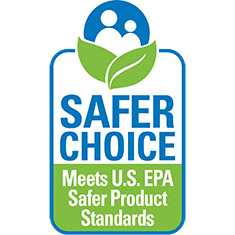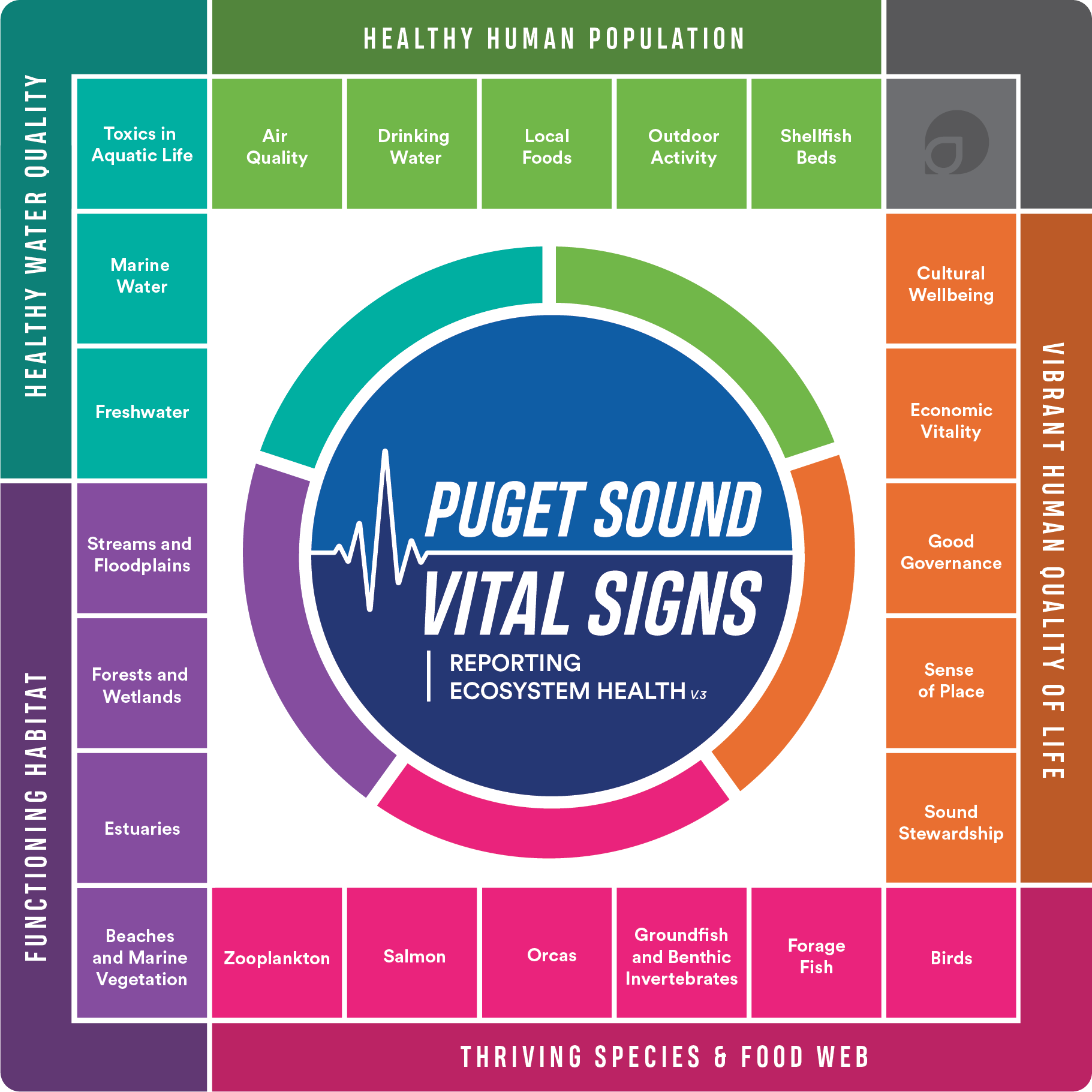Special Announcement: The Stormwater Strategic Initiative Leads (SILs) solicitations for competitive Request for Proposals (RFPs) have been released. Click here to learn more
Humans and aquatic life in Puget Sound are exposed to thousands of chemicals every day, both from the past and the present. The impacts of some legacy chemicals, such as PCBs, are well known where other chemicals are just beginning to be identified and their impacts are yet to be fully understood. These toxics are continuing to push some of our most sensitive species towards extinction, and leading to massive die-offs in species that may soon face the same threat. It is important to address and improve toxic impacts to enhance human health, preserve Tribal Treaty rights, and protect species that bear the unsuspected burden of these chemicals.
Why have this Implementation Strategy?
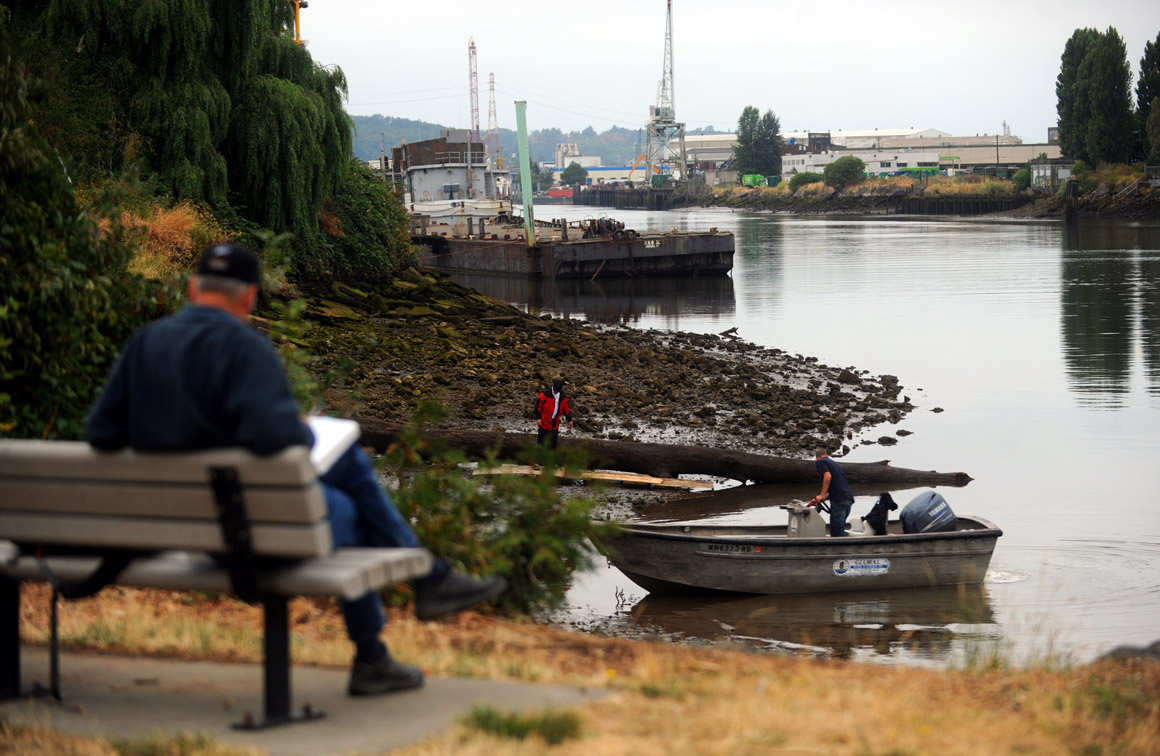
Photo Credit: US EPA
Millions of new chemicals are synthesized each year. Given current regulations it is impossible to ensure every new chemical is safe for humans and aquatic life. Even without new chemicals, legacy and existing toxics in the environment pose a formidable threat.
Without strategic intervention, human consumption of aquatic species (e.g, fish and shellfish) will become even more hazardous to health, Tribal Treaty rights will be violated, and species that have become cornerstones to our culture and way of life will become extinct. It is crucial to reduce and prevent toxics in the environment, identify and prioritize toxics of greatest concern, and take corrective actions to cleanup areas of greatest impact to ensure a resilient and healthy Puget Sound.
Key Strategies
Many chemicals that enter and affect Puget Sound, including their impacts on aquatic species and humans, are unknown to researchers. The first step to address these CECs is to identify them and understand the amount and toxicity of each in Puget Sound. With this information we can prioritize which chemicals should be addressed first through regulation, policy, incentives and engagement, all considered management solutions. Management solutions may include completing Chemical Action Plans, developing new regulations to address CECs in consumer products, and addressing pathways and sources to reduce inputs.
Another key strategy is to develop incentives to remove primary legacy sources of Polychlorinated Biphenyls (PCBs), Polycyclic Aromatic Hydrocarbons (PAHs), and Poly-diphenyl ethers (PBDEs) that we know have significant environmental impacts. Incentives for removal will focus on locations where efforts will result in greatest reduction of toxic impacts to critical marine species and improve water quality in all communities, including those who might be most impacted: overburdened communities. A pilot program is needed to evaluate incentive programs and take the lessons learned to develop full-scale programs.
The primary source of toxics into Puget Sound is through stormwater runoff. This strategy aims to reduce the amount of toxics entering Puget Sound by identifying pollution sources, known as hotspots, preventing their release, or reducing their contributions through appropriate stormwater best management practices (BMPs). Once the source is identified, source control efforts such as engineered stormwater treatment can address the specific pollution problem. Engaging local decision makers and citizens about the risk of toxic hotspots may also help to reduce pollution by enhancing political will. These risks include risks to human health from eating fish and municipal legal liability from failure to take timely and effective action.
We aim to reduce the amount of toxics loading in stormwater by incentivizing redevelopment in high-pollutant loading areas by installing more stormwater management infrastructure. Data needs to be collected and synthesized to prioritize geographic areas producing high toxics loads. Incentivizing redevelopment in these areas with stormwater BMPs and both green and gray stormwater infrastructure will help reduce polluted stormwater runoff into the Puget Sound.
The last major strategy is to prioritize and accelerate in and near-water (upland waterfront) cleanup of contaminated sites based on risk to species and nearby communities. This includes developing relevant prioritization criteria, accelerating design and implementation of remediation action, and monitoring cleanup effects to reduce risk as quickly as possible.
What Can You Do?
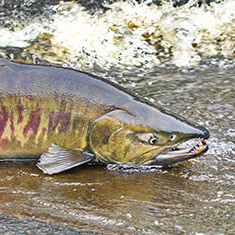
Learn About Reducing Toxics at the Source
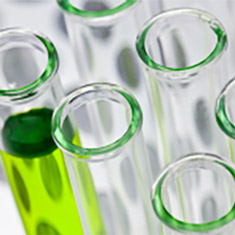
Learn About the Future of Green Chemistry
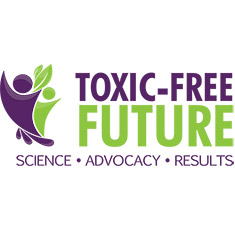
Check out Resources from Toxic Free Future
Track What's Happening on the Ground
We Invest in Puget Sound recovery - check out our funded projects

